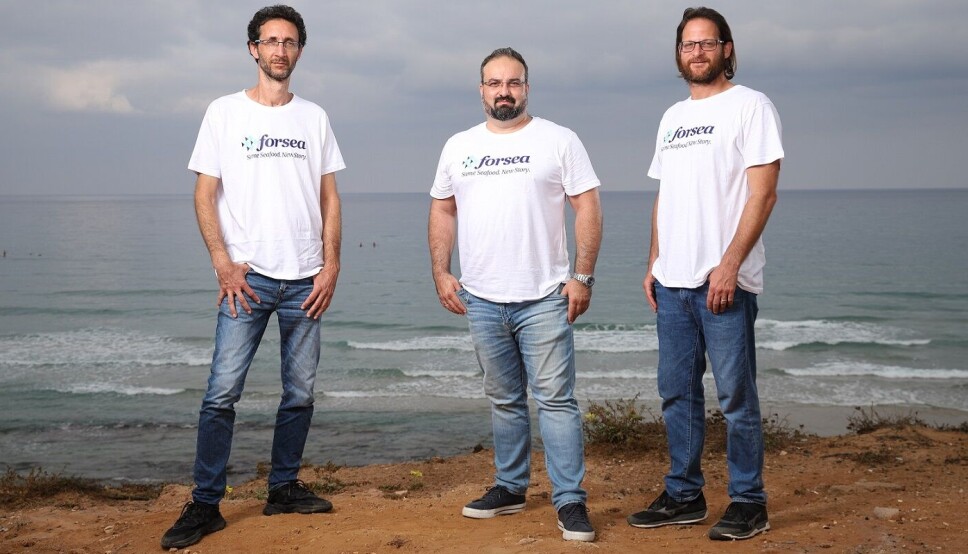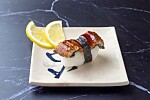
Foodtech start-up makes growing fish from cells easier and cheaper
Israeli company’s patented method removes need for ‘scaffold’ to form meat
An Israeli start-up company has patented a technology that makes growing seafood from cells simpler and more cost-effective and could fill a gap created by increasing demand.
Forsea Foods Ltd’s “organoid” technology removes the need to combine different types of lab-grown cells on a “scaffold” to form meat.
It will initially grow eel meat, which the company says has become rarer due to overfishing and sells in Japan for up to US$70 per kilogram, although Forsea says it can cultivate practically any type of seafood.
Previously used in developmental biology, medicine and research, organoids are stem cell-derived, three-dimensional tissue structures that when used in cell-cultured seafood products require only a minimal amount of growth factors.
Natural composition
Developed by Dr Iftach Nachman, co-founder of Forsea, the organoid approach to forming fish tissue involves creating an ideal environment for fish cells to spontaneously form their natural composition of native fat and muscle. They grow as a three-dimensional tissue structure in the same manner they would grow in a living fish.
“While cell cultivation largely focuses on a system of directed differentiation, where cells are signalled to differentiate into a specific cell type and are then combined on a scaffold, our system grows the aggregate of the various cells already at the initial stage of the process. The cells organise themselves autonomously into their innate, purposed structure, just as in nature,” explained Nachman, a principal investigator at Tel Aviv University.
The result, says Forsea, is sustainably produced, succulent fillets of cultured seafood that embody the same taste and textural traits as their ocean-caught counterparts but are free from pollutants such as mercury, industrial chemicals, and microplastics. Forsea claims that they will also yield the same nutritional profile as traditionally raised seafood. “This is a function of how you nourish the cells,” said Roee Nir, a biotechnologist and chief executive and co-founder of Forsea.
Multiple benefits
“There are multiple benefits to the organoid method of cell cultivating fish,” Nir added. “First, it is a highly scalable platform that bypasses the scaffolding stage and requires fewer bioreactors. This makes the process much simpler and more cost-effective. Additionally, it dramatically reduces the amount of costly growth factors needed.”
The start-up was formed last October, with an initial injection of capital support from the Israeli Innovation Authority (IIA) and the Strauss-Group. The new venture brought together Nir, Nachman, and Dr Yaniv Elkouby, a senior researcher at the Hebrew University of Jerusalem and expert in cell developmental biology who dedicated numerous years studying piscine biology.
Forsea has been helped by The Kitchen Hub, which nurtures and commercialises cutting edge technology start-ups that can add value across the global food chain and has 11 alternative protein producers in its portfolio of 22 companies.
Not enough fish
“The demand for seafood is showing no signs of slowing down,” said Kitchen Hub vice president of business development Amir Zaidman. “But we are rapidly approaching the point where there will simply not be enough fish in the sea to sustain the global community. Forsea’s innovative new cultivation platform has the potential to bring positive disruption to this paradigm by providing a clean, nutritious, delicious, and commercially viable alternative to wild-caught seafood while leaving the delicate ocean ecosystem completely untouched.”

Forsea has chosen cell-cultured eel as its first product due various reasons, including the decline in the animal’s wild populations, its price, and fact that eels don’t breed in captivity. This means eel farmers must use baby eels taken from the sea, although companies such as ValAqua in Spain ensure rivers are re-stocked.
“The market demand for eels is enormous,” said Nir. “In 2000, the Japanese consumed 160,000 tonnes. But due to overfishing and rising prices, consumption has dwindled to just 30,000 tonnes. There is a huge gap between the supply and the demand for eels which traditional aquafarming cannot accommodate. Compounding this problem, Europe has barred the export of any type of eel product.
“The market opportunity for cell-cultured eels is tremendous."